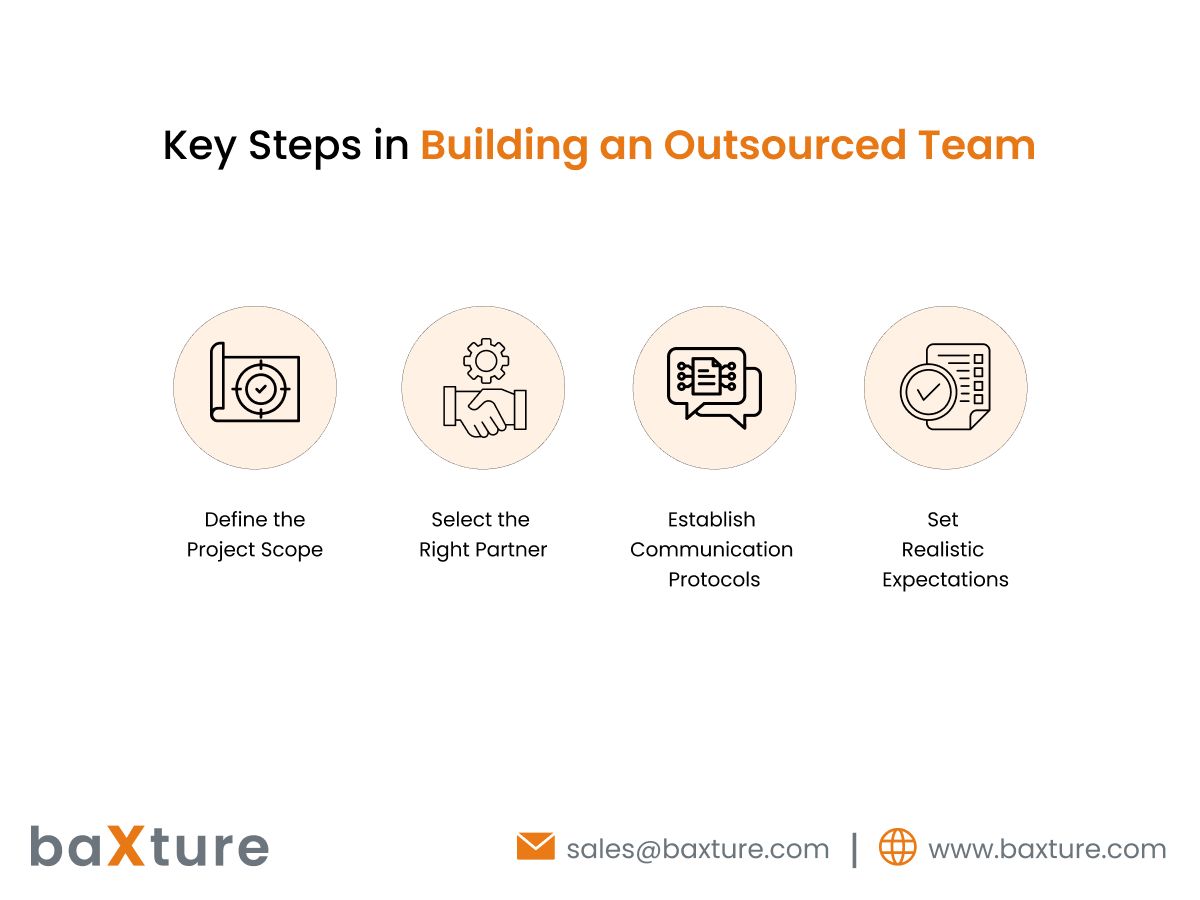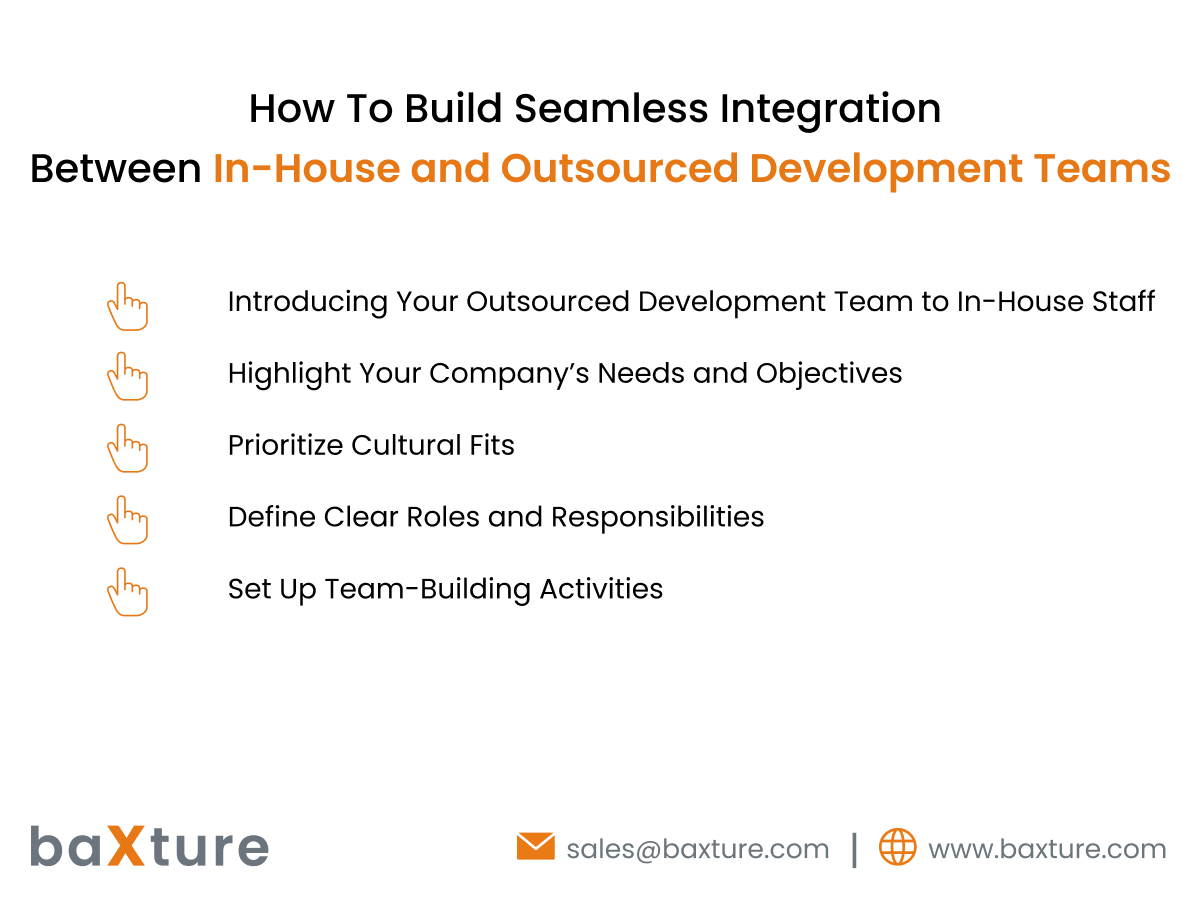Blogs
How to Integrate Outsourced Teams with In-House Teams

As technology evolves and the pace of business quickens, IT firms increasingly rely on outsourcing to scale and innovate. Integrating outsourced teams with in-house staff, however, requires careful planning and execution to maximize productivity, maintain culture, and avoid operational disruptions. This article will explore key steps in ensuring seamless collaboration between outsourced development teams and internal staff, delivering on objectives while preserving unity and efficiency.
What Is Outsourcing?
Outsourcing is a business strategy where companies delegate specific tasks, functions, or entire projects to external third-party providers. By leveraging global talent, firms can reduce operational costs, increase flexibility, and focus internal resources on core business functions. In the IT sector, outsourcing often includes software development, quality assurance, IT support, and other technical services. Outsourcing allows businesses to access top-tier talent and reduce time-to-market for products and services, all while maintaining flexibility to scale operations.
What Is An Outsourced Development Team?
An outsourced development team refers to a group of skilled professionals hired externally to handle various aspects of software development. This team operates remotely but works closely with in-house teams to deliver on a shared vision. Outsourced development teams often include developers, designers, testers, and project managers who complement and enhance in-house capabilities. By adopting a hybrid approach—utilizing both in-house and outsourced talent—organizations can streamline processes, reduce costs, and access specialized skills on demand.
Why Are Companies Using Outsourced Teams?
Several factors drive the adoption of outsourced development teams. First and foremost is cost efficiency—outsourcing allows companies to save on overhead expenses such as office space, equipment, and full-time salaries. Additionally, access to a global talent pool means businesses can hire specialized experts from different regions, gaining expertise they might not be able to source locally. Furthermore, outsourcing enables faster scalability, allowing companies to quickly expand their workforce without going through time-consuming recruitment processes. Finally, outsourcing provides the flexibility to adjust resources as projects evolve, ensuring a more agile business approach.
How To Build an Outsourced Team
Building an outsourced team begins with identifying specific business needs and selecting the right outsourcing partner. Start by clearly defining the scope of the project, required skill sets, and timelines. Vet potential outsourcing partners based on their expertise, cultural alignment, and track record. Ensure the external team understands your company's goals, values, and processes from the outset. A strong onboarding program and continuous communication play vital roles in ensuring that the outsourced team is aligned with your company's expectations and workflows.

Key Steps in Building an Outsourced Team:
- Define the Project Scope: Clearly outline the project goals, timelines, and key deliverables. Identify areas where in-house expertise might be lacking and ensure that the outsourced team has the specific skill sets required.
- Select the Right Partner: Choose outsourcing providers with a proven track record in delivering high-quality work. Cultural fit, expertise, and time zone compatibility should all be considered during the selection process.
- Establish Communication Protocols: From the start, establish clear communication channels and protocols to ensure seamless collaboration between teams. Use project management tools to track progress and maintain transparency.
- Set Realistic Expectations: Clearly communicate deadlines, deliverables, and performance expectations to both in-house and outsourced teams. Ensure everyone is on the same page regarding project milestones.
How To Build Seamless Integration Between In-House and Outsourced Development Teams
The key to success when integrating outsourced and in-house teams lies in creating an environment of collaboration, mutual respect, and clear communication. Below are some critical strategies for building seamless integration between the two teams:

Introducing Your Outsourced Development Team to In-House Staff
Start by introducing the outsourced development team to key members of your in-house staff. Ensure that both teams understand each other's roles and contributions to the project. Holding virtual or in-person meetings early in the process can foster rapport and build mutual trust. Consider assigning a liaison or project manager who will act as a bridge between the two groups, facilitating smooth communication and ensuring alignment on project goals.
Highlight Your Company’s Needs and Objectives
Outsourced teams must have a clear understanding of your company’s broader goals and objectives. Provide them with a comprehensive overview of the project and explain how their contributions will fit into the bigger picture. Communicate your business vision and the value each team is expected to bring to the table. This alignment will not only help keep both teams focused but also ensure that the outsourced team is motivated to contribute effectively.
Prioritize Cultural Fits
Cultural alignment between in-house and outsourced teams is crucial for smooth collaboration. Make sure the outsourced team shares the same work ethic, values, and communication style as your internal team. During the vetting process, evaluate whether the external team demonstrates an understanding of your organizational culture and whether their working style is compatible with your own. Emphasize cultural fit during the onboarding process and look for long-term partners who understand and respect your company’s way of working.
Define Clear Roles and Responsibilities
One of the biggest challenges in integrating outsourced and in-house teams is ensuring that roles and responsibilities are clearly defined. Without clear boundaries, work can overlap, leading to confusion and inefficiency. Set clear expectations for each team member’s role in the project. This can be achieved by developing a detailed project plan, with clear job descriptions, deliverables, and reporting structures. Clarity in roles and responsibilities will prevent duplication of efforts and ensure smooth workflow.
Set Up Team-Building Activities
Fostering team cohesion goes beyond just working together. Organize virtual team-building activities to help in-house and outsourced team members bond. This could include online games, collaborative workshops, or regular social check-ins. Team-building activities break down barriers, improve communication, and promote trust, all of which are essential for long-term collaboration.
Regular meetings—both formal and informal—can also be useful in ensuring continuous engagement and collaboration. These initiatives make the outsourced team feel like part of the company and strengthen their commitment to the project’s success.
Ready to Hire Remote Developers and Build an Outsourced Development Team?
Integrating outsourced development teams with in-house staff is an opportunity to tap into global expertise, reduce costs, and scale efficiently. However, seamless collaboration requires strategic planning, clear communication, and a strong cultural alignment. By fostering team unity, clearly defining roles, and maintaining open communication channels, IT leaders can ensure that outsourced and in-house teams work together harmoniously, driving innovation and delivering results.
Baxture offers end-to-end software development outsourcing solutions tailored to the unique needs of IT firms. Whether you need to expand your development capacity or accelerate time-to-market, our experts can help integrate outsourced talent with your in-house teams seamlessly.
Ready to explore outsourcing? onnect with us at sales@baxture.com to learn more.